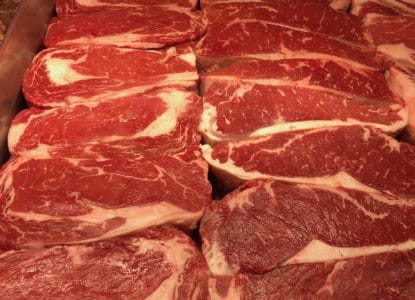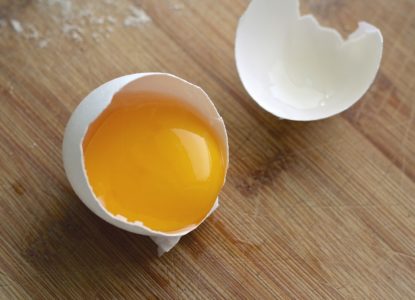A Simple Trick to Make White Rice Healthier

Why do people say eating white rice is unhealthy?
Because the process of making white rice involves stripping the grain of its outer shell, which is where all the fiber is contained. Without the fibrous outer shells to slow digestion, eating white rice can cause large spikes in blood sugar, which leads to inflammation. This is why the Harvard School of Public Health says eating white rice regularly may contribute to type 2 diabetes risk.
Thanks to new nutrigenomic research at King’s College London called the PREDICT-1 study, we now know that genetics plays a large role in who is especially susceptible to post-meal blood sugar spikes, so not everyone will have the same response to white rice.
See also: How genetics affect blood sugar spikes
White rice can spike blood sugar
Nevertheless, for many people, eating white foods like potatoes and rice can cause unhealthy spikes in blood sugar which leads to chronic inflammation.
So, yes, we know that white rice is bad for blood sugar control and that for susceptible people, brown rice may be a healthier option. On the flip side , those with chronic stomach issues, like Crohn’s disease, may find white rice preferable because it’s easier to digest.
When I choose white rice, I am letting it cool before eating it. Same with potatoes and oats.
Why?
Allowing rice to cool forms resistant starch
Resistant starch forms when dishes like rice are cooled. This special form of starch helps control blood sugar and is good for gut health. 1
Some foods have naturally occurring resistant starch, others like white rice and potatoes, can form resistant starch when they are cooked properly. A study conducted in 2015 found that rice cooked and allowed to cool for 24 hours caused a much gentler blood sugar spike than rice eaten immediately after cooking.
The science here is interesting and worth a refresher. As Jennifer noted in her recent post on undigested proteins and gut health, we want the protein we eat to be digested and absorbed in the small intestine, which is early on in the digestive process. It’s generally regarded as a bad thing to have undigested meat arriving in the colon where it ferments and produces ammonia. However, just the opposite is true with carbohydrates.
Resistant starch and fiber are good things to eat precisely because they are tougher to digest. They survive the gauntlet of the acidic stomach, and energy hungry small intestine, and make their way into the colon where fermentation feeds the good microbes in our gut. Although this sounds gross, it’s a good thing. We want complex carbohydrates to ferment in the colon because they help diversify the microbiome, which in turn, helps maintain intestinal health and integrity.
Note: bodybuilders like Brian Shaw, who are doing hours of intense exercise everyday have more wiggle room with foods like white rice because their muscles need immediate fuel to replenish the glycogen stores they deplete when lifting heavy weights. Their lifestyles makes them more insulin sensitive than most of us.
The bottom line
Cooling white rice before reheating makes it healthier by decreasing its ability to spike blood sugar.
Cooled rice, even when its reheated, is harder to digest because of resistant starch which blunts the blood sugar response.
By contrast, the simple sugars in freshly cooked rice are rapidly digested and absorbed in the bloodstream all at once which creates the blood sugar rollercoaster responsible for inflammation.
The bottom line here is that resistant starch is a good thing because it reduces the major spike in blood sugar and helps to feed the good microbes in our colon. If you or a loved one loves white rice, but is having blood sugar issues, try making rice the night before and letting it cool.
You could turn an unhealthy food into a healthier option.



